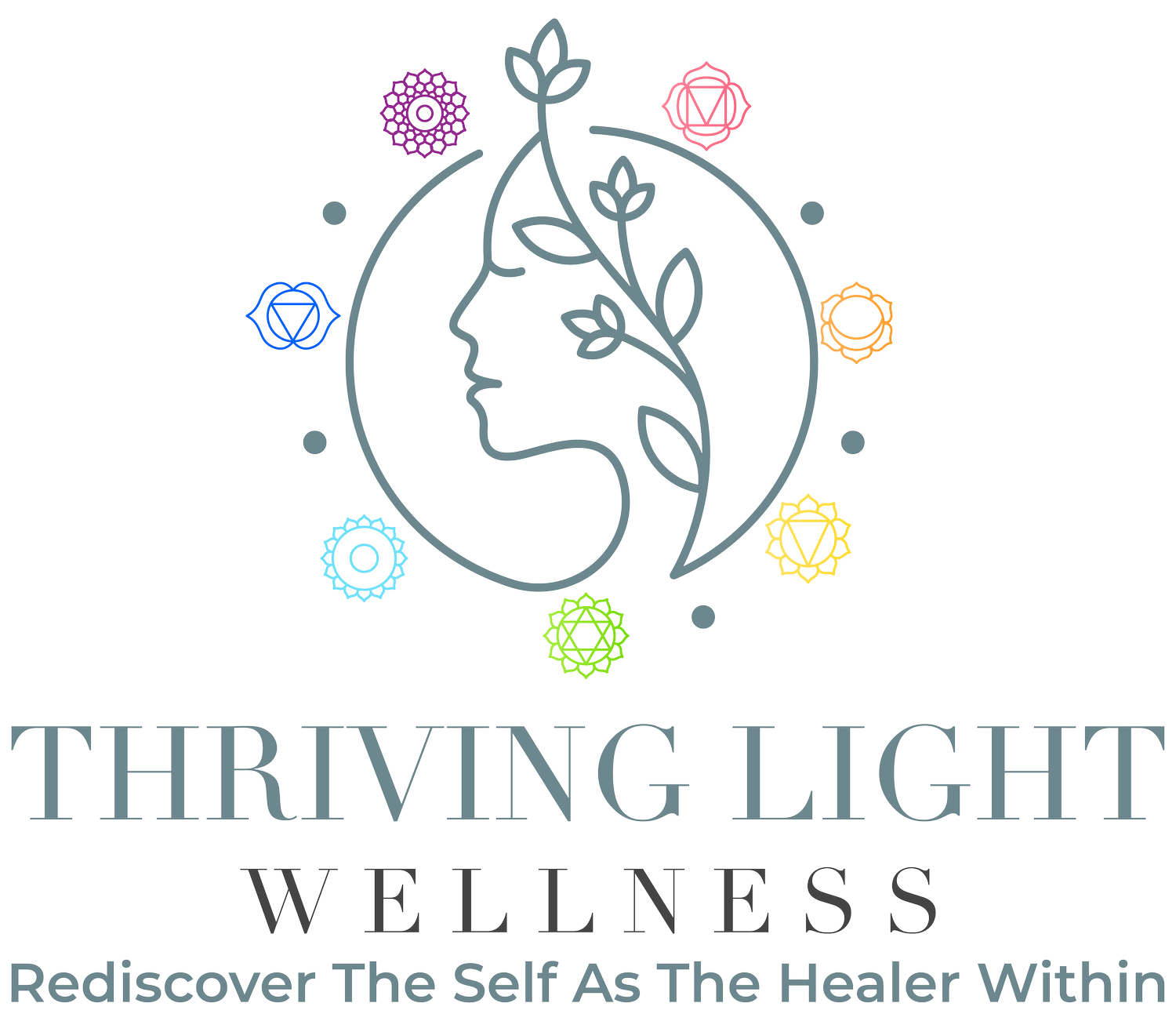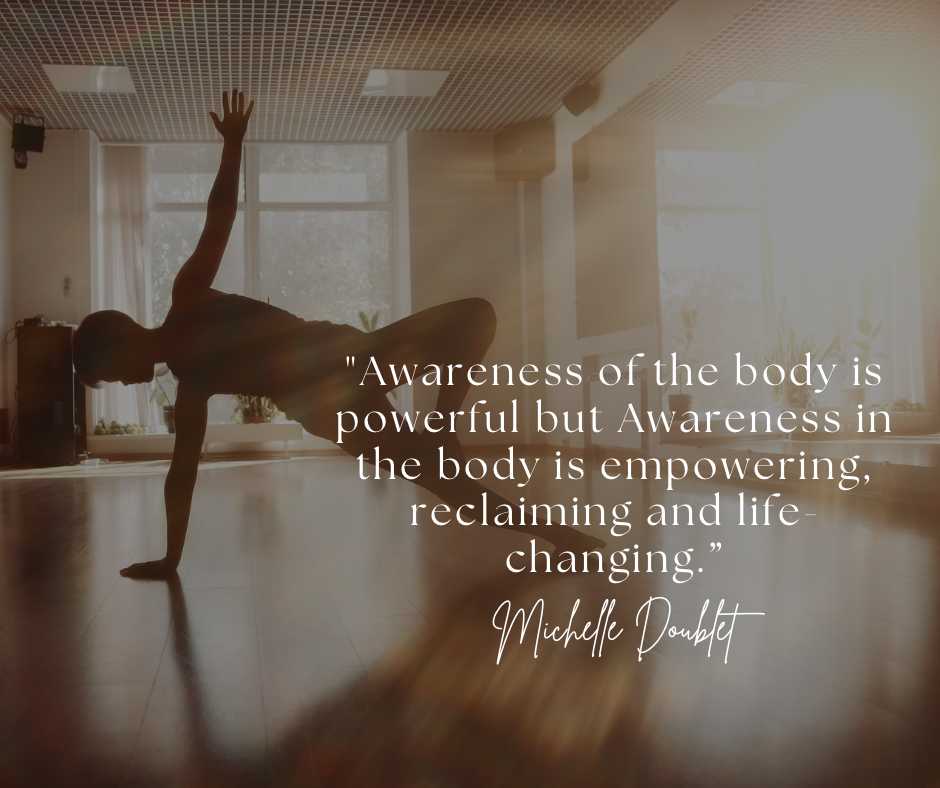Musical Scale: A Doorway to the Embodied Self
Integrating the Nervous System, Chakra System & Somatic Healing
Developed and written by Michelle Doublet, LCSW, E-RYT, YACEP, CCTP-II Certified Somatic Parts Work and Trauma Resolution Energy Therapy Practitioner
Introduction: Messages From the Body
Musical Scale: A Doorway to the Embodied Self expands on Dr. Stephen Porges’ Polyvagal Theory and introduces additional trauma responses—fawn and functional freeze—to deepen how we understand survival states. The nervous system is just one part of the story. Our survival responses also echo through the body’s energy system—our chakras—revealing deeper patterns of disconnection from the embodied Self.
This isn’t about one system before the other. It’s about integration. Trauma, survival adaptations, and misalignment from our truth show up across multiple layers: nervous system, energetic body, emotions, and intuition.
What Is the Embodied Self?
The embodied self is a lived experience—when your body, emotions, and intuition are in relationship with one another. It’s the space where you feel alive, centered, and whole.
Disconnection from this self happens when we’ve been taught to survive instead of belong—to overfunction, people-please, numb, dissociate, or shut down. These survival strategies imprint not only on the nervous system but also energetically. The result? A felt sense that something is “off,” even if you can’t name it.
Nervous System & Chakra System: The Body Speaks in Layers
Your body speaks through sensation, but it also speaks through energy. You might feel:
An anxious buzzing in the body (sympathetic activation)
A block in the throat or heart (energetic constriction)
Difficulty speaking your needs (disconnection from truth)
These are not separate experiences—they are layered expressions of one deeper truth: something within you wants to come home.
Understanding the Fawn Response
Fawn is a lesser-acknowledged survival state where you prioritize others’ needs to stay safe—through appeasement or placating behaviors.
There’s often tightness in the throat, chest, and jaw, and energetically, this may show up in the heart, throat, or solar plexus—the very centers of love, voice, and will.
A full exploration of fawn patterns and energetic imprints is included in the workbook.
Functional Freeze: When You’re Doing, But Not Feeling
Functional freeze is a state where you’re externally “fine”—working, showing up, functioning—but internally numb, foggy, or disconnected.
You may feel like you’re pressing the gas and the brakes at the same time.
Energetically, this often shows up in the solar plexus, diaphragm, and third eye.
Want to explore this more? It’s all inside the workbook.
The Window of Tolerance & Your Energy Field
Dr. Dan Siegel’s Window of Tolerance describes the range within which your nervous system can safely experience emotion and connection. When you’re outside the window, you enter:
Hyperarousal: Anxiety, anger, restlessness
Hypoarousal: Numbness, freeze, collapse
From an energetic lens, this window is also when your chakras and aura can recalibrate. Inside the window, your energy field feels cohesive, flowing, alive. Outside the window, it can collapse inward, scatter outward, or shut down completely.
Chakra Awareness Within the Musical Scale
Reflections from the Body.
Here’s a glimpse of how nervous system states may reflect through your energy body:
Ventral (Safe & Social): Heart, Throat, Crown
Fight: Solar Plexus
Fawn – Appeasement: Solar Plexus, Heart
Functional Freeze: Diaphragm, Third Eye
For the full Chakra + Nervous System reflection map, download the workbook below.
This is not a diagnosis tool, but a reflective guide—an invitation to explore what your body and energy might be revealing.
Reclaiming the Embodied Self
Healing is not about managing symptoms—it’s about reconnecting with your inner world. It’s about meeting the Self that trauma asked you to forget. While the nervous system and chakra system are different in form—biological and energetic—they are intimately linked.
They move in relationship, like breath and body—each influencing and reflecting the other. A shift in your biology can ripple through your energy field, and a block in your energy can shape how your nervous system responds to life.
Our nervous system holds the imprints of lived experience—the stories, beliefs, and narratives that shape how we relate to ourselves, others, and the world. The chakra system reflects and expresses those imprints energetically—through emotional flow, constriction, or overactivation.
When one shifts, the other responds.
Just as a single offbeat note can affect an entire musical piece—or one misaligned posture can shift the flow of a yoga practice—a dysregulated nervous system can cause a chakra to dim, overcompensate, or shut down. Likewise, blocked energy in a chakra can impact the body’s ability to regulate, rest, or relate.
When we tend to both—the science of the nervous system and the wisdom of the energy field—we create harmony, integration, and deep movement back into the Self.
When we regulate, we gain greater access to the inner resources that may have been blocked in survival states—power, voice, clarity, compassion, and connection.
Within the Window of Tolerance: A Doorway to the Embodied Self
When we return to regulation, it’s not just about feeling calm. It’s about reconnecting with the capacity to feel—to move through the full range of emotion without getting stuck in survival.
We begin to sense what’s present in the body, relate to it with more awareness, and respond rather than react.
Within this regulated space—what we call the window of tolerance—there exists a doorway. According to Michelle Doublet’s framework, The Musical Scale: A Doorway to the Embodied Self, this is the threshold where healing begins to deepen. It’s here that we access the embodied self—not as a concept, but as a felt, living truth.
It’s the place where truth becomes accessible. Where clarity, intuition, and emotional expression come back online. We begin to access the parts of us that survival once disconnected—our groundedness, emotions, voice, clarity, and trust.
And within this doorway, we don’t just reconnect with emotion—we access our deeper knowing. This is where intuition awakens, clarity sharpens, and truth becomes embodied. The parts of us that once felt distant or silenced begin to speak with wisdom.
Inside the workbook, you’ll find a full breakdown of this concept and how it connects and relates to your healing journey
We’re not trying to fix but simply create the space for the Self to rediscover how to anchor and flow—by releasing the beliefs and narratives that no longer serve us and making space for what is more in alignment with our now.
Ready to Go Deeper?
Download the Musical Scale: A Doorway to the Embodied Self workbook—your guide to somatic, energetic, and intuitive restoration (button below)
© 2024 Michelle Doublet | Thriving Light Wellness
All rights reserved. You are welcome to share this post with proper credit and a link back to the original source. Please do not copy or reproduce content without written permission. This work is intended for educational and inspirational use only and is not a substitute for professional therapy or medical treatment.
About the Author
Michelle Doublet, LCSW, E-RYT, YACEP, CCTP-II
Certified Somatic Parts Work and Trauma Resolution Energy Therapy Practitioner
Michelle is a licensed psychotherapist, somatic practitioner, energy healer, and intuitive guide. Her work weaves nervous system science, subtle energy, movement, and ancient wisdom to help others reclaim their embodied self and live with power, clarity, and compassion. She is the founder of Thriving Light Wellness and owner of SomaSoul Embodiment, creator of The Sacred Path.
Download the Full Workbook
Want to explore the full chakra-integrated Nervous System Musical Scale?
Download Musical Scale: A Doorway to the Embodied Self—a trauma-informed, somatic guide to reclaim clarity, truth, and power.
Click Below to Get the Workbook





















